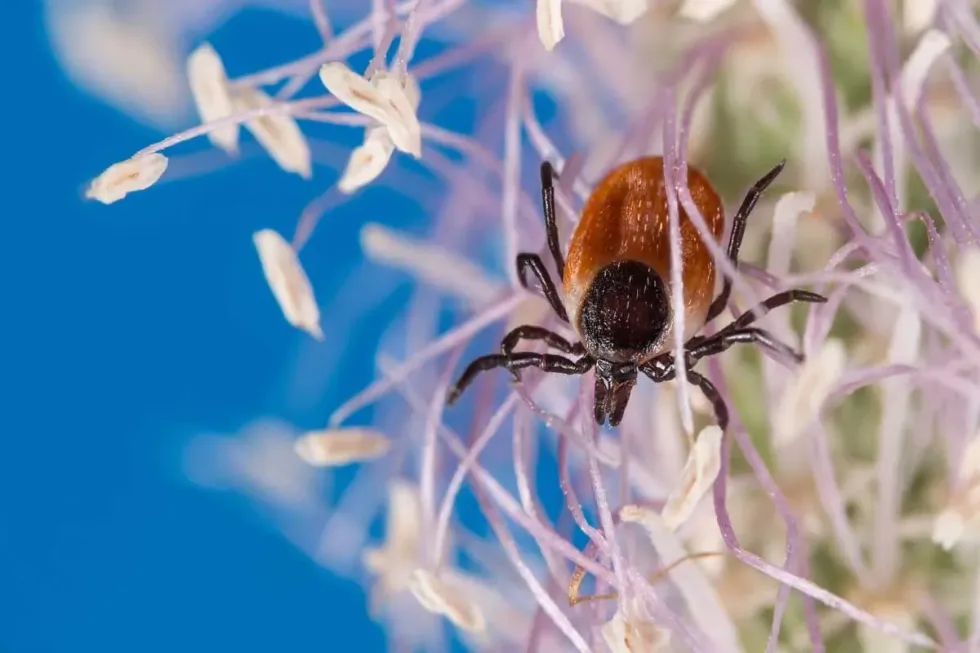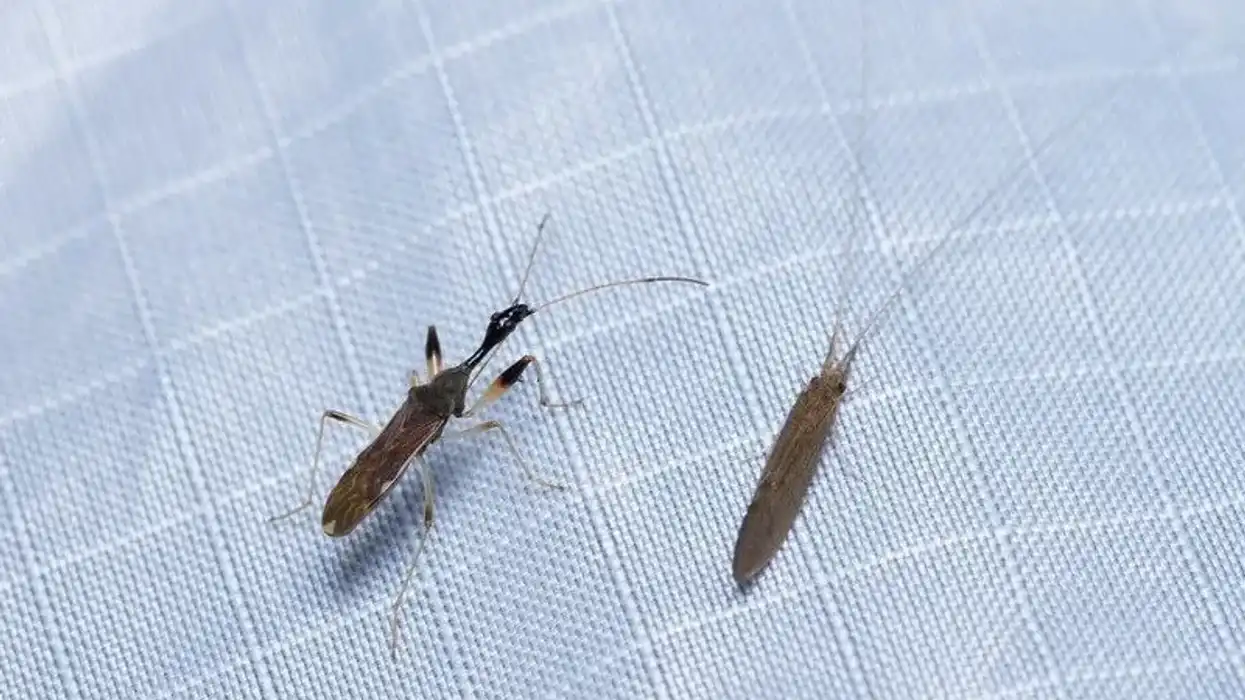Black-legged ticks, also known as deer ticks, are notorious arachnids that are distinguishable by their small size and dark legs. Although its size is much smaller than that of a dog tick, it is responsible for spreading many bacterial diseases through its bites like Lyme disease, Powassan encephalitis, anaplasmosis, and babesiosis.
Of all these black-legged tick diseases, Lyme disease is the most common in humans. It is of extreme medical relevance in the northeast United States because it affects the health of both humans and animals.
The origin of these ticks is unknown but over the past century, they have rapidly expanded in the east of the United States, especially the northern part.
Earlier, they were recorded along the northern Atlantic Coast, the Gulf Coast, and the Southeast. In the '20s, small populations were also recorded in New England, Rhode Island, Long Island, New York, and Wisconsin.
To know more about these tiny but dangerous creatures, read on. If you enjoyed learning about this tiny creature then you may also love to read about the saddleback caterpillar and pseudoscorpion.
Black-Legged Tick Interesting Facts
What type of animal is a black-legged tick?
A black-legged tick is a tick that is part of a superorder called Parasitiformes.
What class of animal does a black-legged tick belong to?
Black-legged ticks, also known as deer ticks, belong to the class of Arachnida.
How many black-legged ticks are there in the world?
Black-legged ticks are abundant in number. They are not at all endangered and are thriving with more than 800 tick species throughout the world.
Where does a black-legged tick live?
Ixodes scapularis, also known as a black-legged tick or a deer tick, is found throughout the east coast of the United States. They are abundantly found in Minnesota, Iowa, Florida, and Texas. They have even been reported to be found in northern Mexico and southeastern Canada.
What is a black-legged tick's habitat?
A black-legged tick is found to thrive in humid environments and areas with coastal proximity. They also seem to thrive in areas with less elevation. They can be found in leaf litter, forest grasses, and shrubby plants.
Who do black-legged ticks live with?
Black-legged ticks are non-nidicolous species that live independently from others of their kind. It is solitary and only interacts with other black-legged ticks during mating.
How long does a black-legged tick live?
Black-legged ticks usually live only until they mate. Their life mainly depends on reproduction, but they have been known to survive for a two-year life cycle in the wild.
The black-legged tick's life cycle consists of a larva, nymph, and adult. Male ticks die soon after mating while female ticks die after laying eggs. The whole life cycle of a black-legged tick ends in only three life stages.
How do they reproduce?
The reproductive behavior of black-legged ticks is highly regulated by the release of pheromones. After the pheromones are released, Ixodes scapularis adults gather on their hosts, on the ground, or vegetation and begin mating. This species of tick is polygynous.
Males usually mate with two to three females but can mate with as many females as possible if a female is not already inseminated. There is a system in place to ensure that males do not mate with already inseminated females.
There is no courtship involved before or after mating in black-legged ticks. They breed yearly, in late spring, usually May. A male dies after mating and a female proceeds to lay eggs, after which it also dies.
What is their conservation status?
Black-legged ticks are thriving in their habitats in the regions of the northeastern United States because of the high population of white-tailed deer in the area which is their main host. They are not at all endangered in any way and have a status of Not Evaluated by the International Union for Conservation of Nature.
Black-Legged Tick Fun Facts
What do black-legged ticks look like?
Adult male and adult female deer ticks, or black-legged ticks, are of different sizes. When unengorged (when they are not filled with blood), an adult male is about the size 0.06 in (1.6 mm), while an adult female is almost double the size at 0.13 in (3 mm).
Both female and male adults have flat, oval bodies. Adult males have reddish-brown bodies whereas, females are more colorful.
Females are orangish-brown except for their mouths, shield, and legs. The abdomen of these ticks, Ixodes scapularis, is a dark reddish-brown which becomes even darker after feeding.
A black-legged tick is not as wide as it is long. Its sharp pointed tooth and mouth are visible from above.
The size of the larvae of this tick is 0.03 in (0.8 mm) after feeding. A baby tick or a nymph, when unengorged, is about 0.04 in (1.6 mm).
The larvae only have six legs while nymphs and adult black-legged ticks have eight legs. If you see a tick of this description, it is best to stay away from it as it possibly transmits diseases like Lyme disease.

How cute are they?
These ticks are not cute and should be avoided as they transmit Lyme disease and six other known human pathogens.
How do they communicate?
Deer ticks or black-legged ticks don't interact with each other and only communicate through pheromones when they have to mate.
How big is a black-legged tick?
The average black-legged tick size is very small, even smaller than a dog tick. The size of an adult male deer tick is around 0.06 in (1.6 mm), while an adult female deer tick is about 0.13 in (3 mm).
Black-legged tick larvae or eggs are 0.03 in (0.8 mm) and a black-legged tick nymph is about 0.04 in (1.6 mm). Female deer ticks are the same size as a sesame seed and sometimes even smaller, while nymphs are the size of a poppy seed.
A black-legged tick engorged after drinking blood can look many times bigger than its original size. Although small, they spread harmful diseases like Lyme disease.
How fast can a black-legged tick run?
Deer ticks or black-legged ticks usually travel from one place to another through their host. They stay at a place until they find a host to attach themselves to and then travel along with it.
How much does a black-legged tick weigh?
A black-legged tick is extremely lightweight. Its weight is so negligible that you won't even notice it even if it's preying on you.
What are the male and female names of the species?
The male and female name of this species is the same, Ixodes scapularis.
What would you call a baby black-legged tick?
A baby black-legged tick is known as a 'nymph'.
What do they eat?
The larvae or eggs are mostly found feeding on the blood of white-footed mice and continue doing so even after they become nymphs. They can sometimes be found feeding on other small mammals as well.
After becoming an adult, females start feeding on larger mammals like white-tailed deer, which is their favorite prey. Adult male ticks don't feed on blood.
Are they dangerous?
Black-legged ticks are extremely dangerous and cause a variety of diseases to various animals through a western black-legged tick bite, especially black-legged tick Lyme disease. They have been known to carry seven human pathogens including Lyme disease, Borrelia miyamotoi disease, Powassan virus disease, anaplasmosis, babesiosis, and ehrlichiosis.
The eggs or larvae of these ticks are also very dangerous as they can spread the same diseases as adults.
Would they make a good pet?
Black-legged ticks are dangerous to keep as pets as humans are prey to them.
Did you know...
The western black-legged tick has a different scientific name which is Ixodes pacificus.
A black-legged tick is usually confused with a dog tick, but they are very different in both size and appearance.
Deers carry on an average of 1000 black-legged ticks on them per animal. Black-legged ticks are present on almost every deer.
Black-legged ticks are active throughout the year and at all times of the day, but they are mainly found in the spring season.
As male black-legged ticks do not feed on blood or stay attached to the host for too long, they cannot spread any diseases, including Lyme disease. The only significance of a male black-legged tick is to mate with females.
What disease is transmitted by the bite of a black-legged tick?
Although they transmit a lot of diseases, Lyme disease is the most common.
If you notice a black-legged tick bite on your body or you notice an eastern black-legged tick anywhere near your house or on your pet, it's best to call the Centers for Disease Control and Prevention (CDC) for further measures.
You can remove a tick on your own by using soap and water for a black-legged tick bite treatment, but it's best to consult a doctor to check for further diseases and bacteria-induced infections.
As their nymphs are most active during spring and early summer, it's appropriate to take certain measures to prevent Lyme disease such as using ticks repellant, checking your pets properly, and cutting grass and shrubs near your home to avoid any contact with them.
Similar measures should also be taken during April to November when adult ticks are most active.
How long do black-legged ticks need to feed?
The life cycle of a black-legged deer tick contains three life stages, larva, nymph, and adult. During each of its life stages, it feeds on different hosts. They need to feed on a blood meal for three to seven days during each of their life stages.
Here at Kidadl, we have carefully created lots of interesting family-friendly animal facts for everyone to discover! Learn more about some other arthropods including oriental cockroaches or silkworms.
You can even occupy yourself at home by drawing one on our Black-legged Tick coloring pages.










